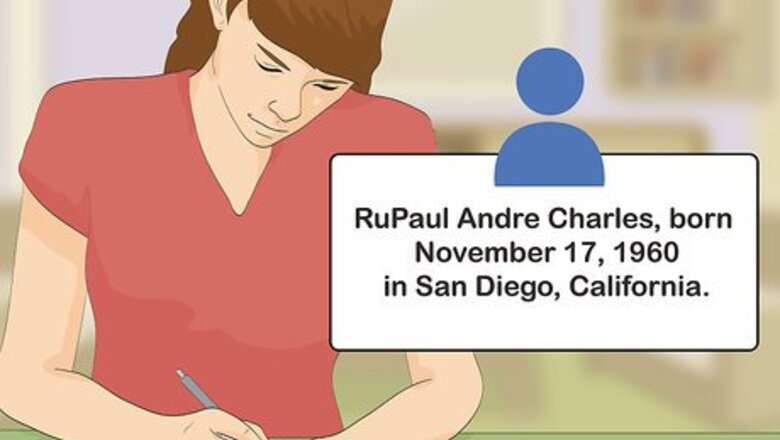
views
Discussing Early Life and Childhood
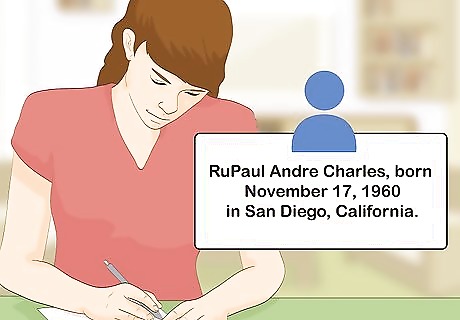
Mention the person's name, birth date, and place of birth. Start by including key biographical details like the person's full name and their birth date. You can also provide the person's place of birth, especially if it will give readers context for the rest of the biography. For example, you may write, “RuPaul Andre Charles, born November 17, 1960 in San Diego, California.”
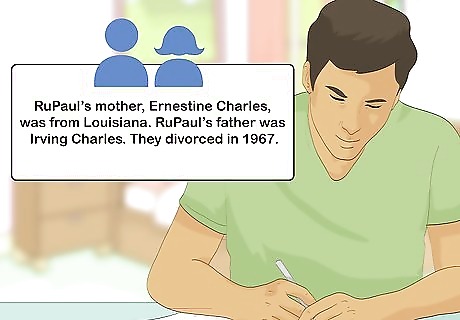
Detail the person's parents. Include the names of the person's parents, as well as any guardians or adoptive parents. Discuss any key biographical details of the person's parents. You can also mention if the parents divorced or separated. For example, you may write, “RuPaul's mother, Ernestine Charles, was from Louisiana. RuPaul's father was Irving Charles. They divorced in 1967.”

Talk about the location of the person's childhood. Discuss where the person grew up. Mention any key moves to other cities or countries during the person's childhood. For example, you may write, “RuPaul grew up in San Diego, California and moved to Atlanta, Georgia with his sister when he was 15.”

Include the person's schooling. Include details on the person's education, such as where they went to grade school or high school. Mention any details about their schooling that reflect on their career or achievements later in life. For example, you may write, “At 15 years old, RuPaul attended a performing arts school in Atlanta. After he graduated, he focused on his budding stage career, opting not to attend college.”
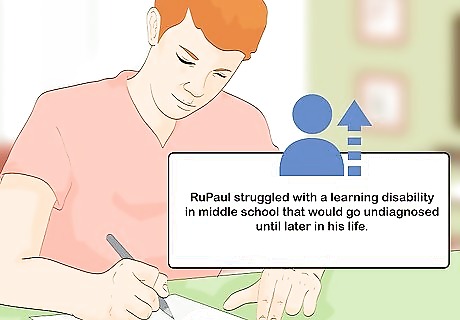
Mention details about the person's upbringing. Discuss any details from their upbringing that reflect on their later life. Make sure you mention key moments in their family or social circle that seemed to impact their childhood and how they developed as a young person. For example, you may write about the person's experience with abuse at the hands of a parent. Or you may mention that the person struggled with a learning disability in middle school that would go undiagnosed until later in their life.
Outlining Adulthood

Talk about the person's adult education, if applicable. The next section of the outline should focus on the person's move from a teenager to a young adult. Mention if the person went to college or entered into higher education. Name the institution as well as the date the person attended school. Note if the person graduated with honors or distinction. For example, you may write, “Martha Graham went to Brown University from 1967-1981, majoring in dance. She worked under famous dancers and choreographers in the performance industry at Brown. She graduated with honors.”

Outline key relationships in the person's adult life. The outline should also mention any friendships, romances, or working partnerships in the person's adulthood. Discuss the person's spouses and children, if applicable. Include any relationships that seem important to the person's development, personally and professionally. For example, you may write, “Martha Graham met choreographer Dash Nam in a dance class at Brown. They became romantic and professional partners, collaborating on a number of early performances. Nam would later play a major role in Graham's performing company in New York City.”

Mention the person's career. Include details about the person's jobs and positions at companies or organizations. Note if the person was self-employed or unemployed for a period of time. Mention any professional relationships in the person's career that seem important. For example, you may write, “Martha Graham worked as a bartender while at Brown to support herself. She then created performances for a small stipend until she was able to open her own performing company in 1987 with the help of Dash Nam.”

List the person's achievements and accomplishments. This is the section where you focus on awards, accomplishments, and moments of recognition in the person's life. You may also want to include any significant failures or setbacks the person experienced. For example, you may write, “Martha Graham was rejected from several major dance companies and was unemployed for several years. In frustration, Graham decided to open her own dance company and studio, using funds from friends and colleagues. It later became the premier dance company in America.”
Detailing Current Life and Impact
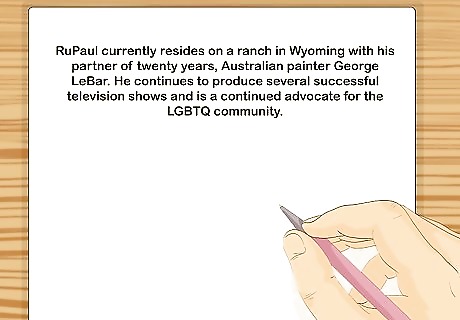
Discuss the person's current situation in life. If the person is still alive, include details on where they are at now. Mention any current projects or career high points. Note where the person now resides as well as any family they may have. You can also include any future plans the person has mentioned or noted. For example, you may write, “RuPaul currently resides on a ranch in Wyoming with his partner of twenty years, Australian painter George LeBar. He continues to produce several successful television shows and is a continued advocate for the LGBTQ community.”
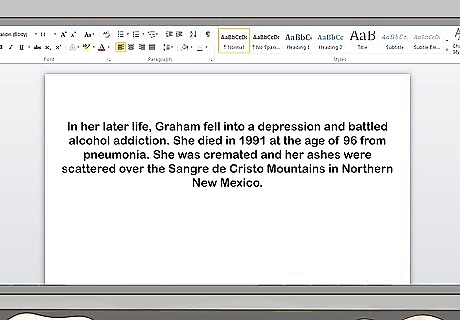
Detail the later life and death of the person. If the person is no longer alive, make sure you mention their later life as well as the circumstances of their death. Include any key moments in their later life, such as awards, accomplishments, or setbacks. For example, you may write, “In her later life, Graham fell into a depression and battled alcohol addiction. She died in 1991 at the age of 96 from pneumonia. She was cremated and her ashes were scattered over the Sangre de Cristo Mountains in Northern New Mexico.”
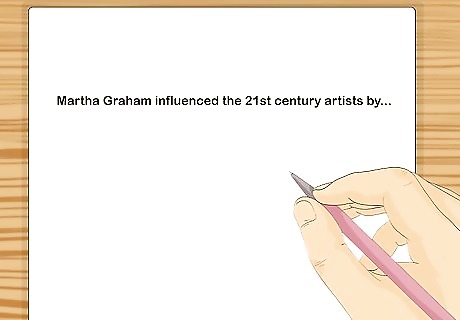
Reflect on the person's influence and impact. You should also include a section in the outline that explores the person's impact in their field. Mention how they influenced others in their field, and continue to do so. You can also include your own opinions about the person's overall life. You may include a short section on the impact the person had, or continues to have, on you. For example, you may write about how the person influenced a generation of artists or how the person impacted the way we view technology in the 21st century.



















Comments
0 comment